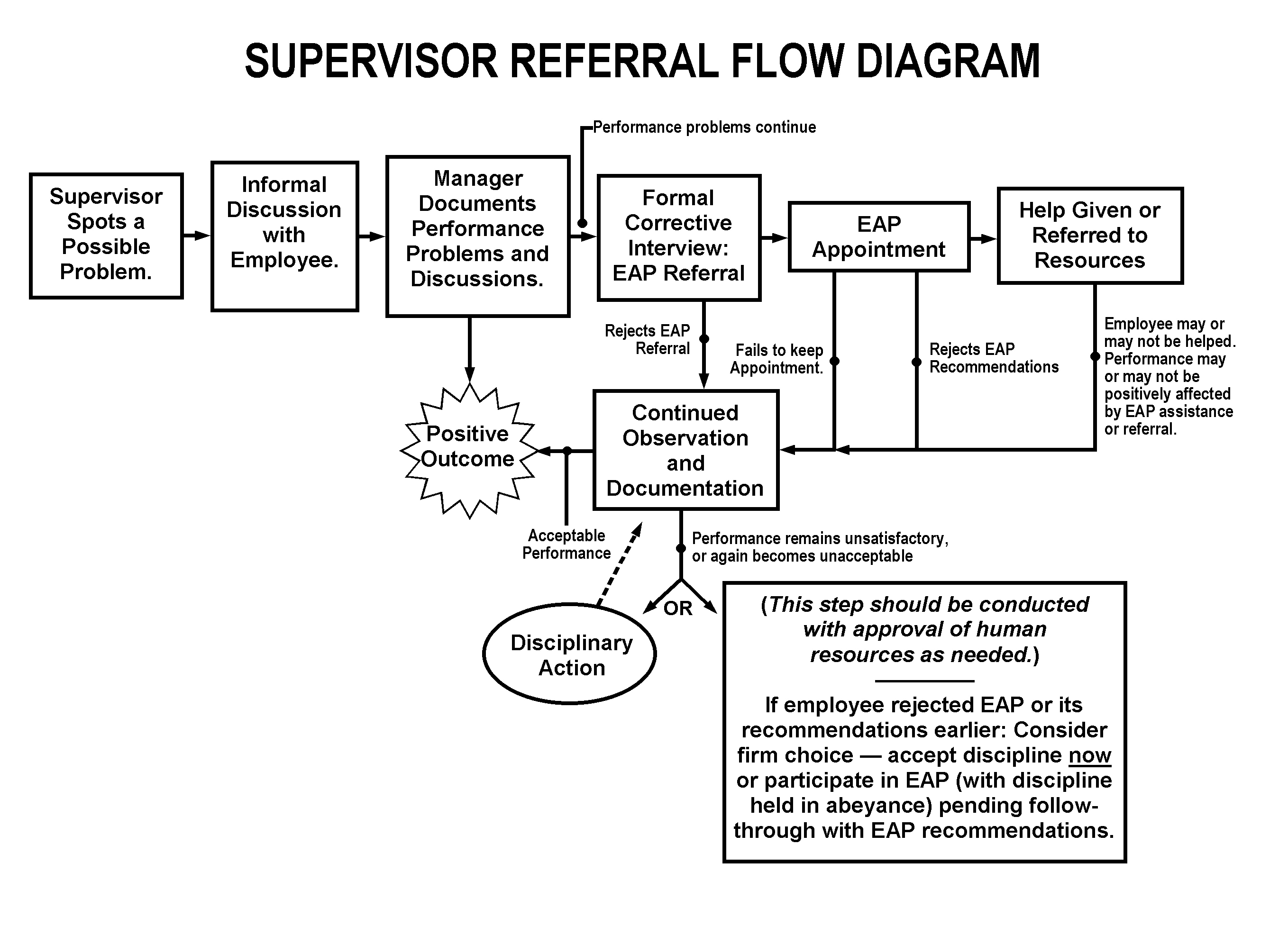
Using the EAP in Supervision
When you started this course, you should have been prompted to type your name in a text box to receive a personalized Certificate of Completion. If this DID NOT happen, reset the prompt for the certificate now by going directly to the end of the course (until you see the blank "null" certificate). Close the course and restart it. You will then see the prompt for personalizing your certificate.
INSTRUCTIONS
This course will teach you about how EAPs work, the steps in making a supervisor referral, and how to avoid common pitfalls when managing troubled employees.
During the course, you will be given short quizzes to help you apply what you are learning. Be sure to view all the contents on each page by scrolling where indicated. Don't miss important links at the bottom of some pages.
Use the BLUE forward and backward buttons to navigate the course. Print any page you would like to have for future reference.
If you must quit the course early, be sure to click the "SAVE" BUTTON in the left-hand margin to create a bookmark. When you restart the course, click on the "GO TO" BUTTON to return to where you left off.
Contact your employee assistance professional if you have any questions about the EAP after completing the course. Also, be sure to read your organization's EAP policy so you understand your responsibility and role in the program's success. Remember, top management has endorsed your EAP and expects you to support it.
Enjoy the course and reap the benefits EAPs promise organizations and their employees.
 Course Map/Table of Contents
Course Map/Table of ContentsCopyright © 2005 by DFA Publishing & Consulting, LLC All rights reserved


















